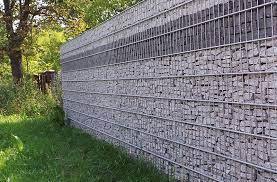
Gabion Retaining Walls: A Solution for Erosion Control
In the arena of civil architectural, Gabions (gabiony) wall surfaces have emerged as adaptable and eco friendly solutions for a wide range of system difficulties. These components, composed of wire cages full of stones or other supplies, offer extraordinary strength, overall flexibility, and environmental compatibility, causing them to be ideal selections for projects including street construction to slope stabilization.
One of many main uses of gabion (gabiony) surfaces in civil architectural is slope stabilization and erosion manage. Regardless of whether put in along highways, train embankments, or coast cliffs, these buildings offer vital help to prevent dirt deterioration and landslides. Their permeable layout enables productive discharge, decreasing hydrostatic strain and lessening the risk of slope failure during large rain or seismic occasions.
Furthermore, gabion walls supply inexpensive alternatives to classic retaining structures like cement surfaces or sheet piles. By using locally-sourced components and simple development tactics, they significantly lessen upfront fees and long-term routine maintenance costs. Moreover, the flexibleness of gabion constructions makes it possible for technicians to evolve to website-certain situations and cater to unexpected challenges during building, thereby minimizing venture slow downs and price range overruns.
In deluge mitigation and riverbank security tasks, gabion surfaces play a crucial role in dissipating water acceleration and reducing deluge chance to downstream neighborhoods. By absorbing and deflecting the force of running normal water, these structures assist to control riverbanks and stop deterioration, conserving beneficial agricultural property and facilities assets. In addition, gabion surfaces might be built-in with environmentally friendly system aspects for example vegetated swales or biography-retention ponds to improve normal water high quality and market environmental durability in riparian areas.
From your sustainability standpoint, gabion walls provide many ecological rewards when compared with conventional design materials. By making use of locally-sourced stones or re-cycled cement aggregates, they minimize embodied vitality and co2 footprint associated with transportation and production. Moreover, the permeable mother nature of gabion components promotes groundwater boost and habitat development, cultivating ecological connectivity in urban and peri-city countryside.
In conclusion, gabion wall space stand for a paradigm change in civil technology towards sustainable and resilient structure remedies. By utilizing the natural durability of all-natural components and embracing progressive layout principles, these structures offer you flexible and price-efficient options for slope stabilization, deterioration manage, and deluge mitigation projects. As we deal with the difficulties of global warming and urbanization, gabion surfaces remain as a evidence of the transformative potential of engineering alternatives that prioritize ecological stewardship and neighborhood resilience.